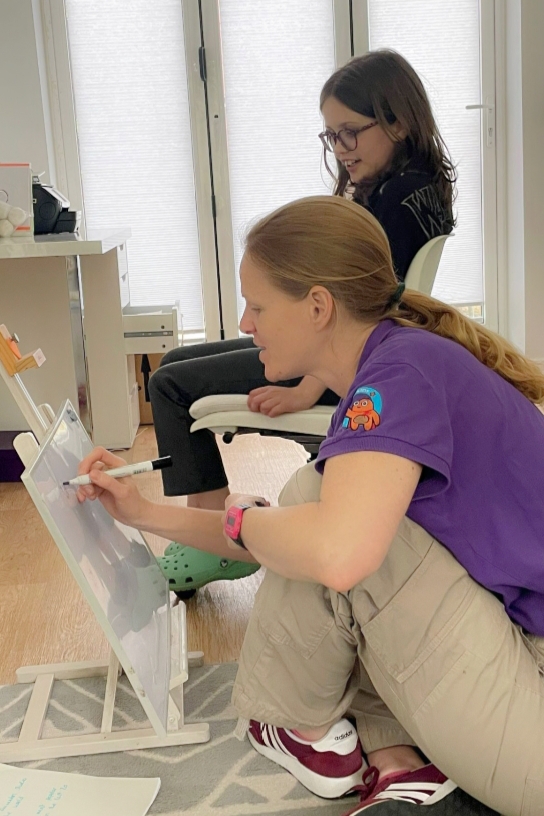Meltdowns are an involuntary emotional response to a child’s senses being overwhelmed. They’re different from tantrums, which usually have a purpose, and are a response to a child not getting or being able to do what they want.
When having a meltdown, your child will be looking to you to help them regain control of their feelings.
Before the Meltdown
1. Get to know your child’s triggers
They are not the same for every child, and your child may not be reacting to something that seems obvious and it may have taken some hours or days for the meltdown to build up. For some children, it might be emotional or sensory overload. For others, it might be unexpected changes, or pain and fear. Knowing your child’s triggers can make it easier to avoid meltdowns.
You may notice that your child gets anxious before school, on a Sunday night or falls apart at the end of the day. Or maybe meltdowns happen close to mealtimes or bedtime. In that case, hunger, fatigue or over-stimulation may be triggers. Or you may notice that there are certain places where they happen, like noisy or crowded places.
2. Notice when it is escalating
If you catch the signs early enough, you might be able to help your child calm down before a full-blown meltdown occurs. Common warning signs are:
- Difficulty thinking clearly, making decisions, or responding to questions
- Repeating thoughts or questions over and over
- Refusing to follow directions or cooperate
- Trying to shut out noises, sights, and other sensory things.
- Trying to run away or hide
- Moving restlessly, like fidgeting or pacing or behaving like a cat on hot bricks
- Complaining of physical issues like dizziness or heart pounding or nausea
3. Try to distract from the trigger
For some children, the escalation phase can be interrupted. It might help to distract your child with a different task or activity. Humour can be a valuable tool, if tolerated by your child, as a way to break the emotional state.
4. Be patient
Your instinct may be to try to stop an escalation quickly. But talking fast and loud often makes it worse as you are unconsciously giving the message that there is a reason to feel in chaos. Give your child more space and more time to process what you are saying. Use short, concise sentences that take away your child’s need to make decisions and use a calm and controlled voice.
During the Meltdown
1. Do a safety or risk assessment
When your child is screaming and throwing things, it may feel like an emergency. But that doesn’t mean it is. The question to consider: Is anyone hurt or going to get hurt? Remove anything that might cause harm to the child or be used to harm others. Remember that this behaviour is unintentional.
2. Be reassuring
It takes trial and error to know if your child wants physical distance or a firm hug or touch. But keeping your voice and body language calm is helpful in either case. Make sure your child knows you are there and that you understand that this may feel scary and out of control. Use words such as ‘I can see that you might be feeling scared/angry, what can I do to help?’
3. Give some space
If you are out in public, try to help your child move to a quieter place. If you are at home, see if you can get your child to go to a spot that is calm. If it is not possible to move your child, ask other people to give you both some space. Notice if you are in an environment where the child might feel hemmed in and encourage them to move to a place where it feels more open.
4. Tone it down
Turn down lights, keep things quiet, and try not to crowd your child. If you are at home and your child is not able or willing to move, try standing off to the side. (Standing in the doorway can make children feel blocked in.)
5. Consider your post-meltdown plan
Start thinking about how to reengage with your child when the meltdown is over, rather than do something that starts it up again. You may need to abandon your shopping trip. If the meltdown was triggered by an emotional conversation, you may need to back away from that topic. You can find a new way to approach it the next time you talk about it. Remember to have the right conversation at the right time and meet your child in their world rather than trying to ask them to join them in your world.
After the Meltdown
1. Take time to recover
When calming down, your child might feel embarrassed or guilty. You will probably see physical exhaustion, too. Give your child some time to recover and ground themselves.
2. Find the right time to talk
You can help your child make sense of what happened. Right after a meltdown may not be the best time, though. When you are both calm, here are some ways to approach it:
- Give your child a heads-up – give advance notice that you are going to talk and be reassuring that your child’s not in trouble.
- Be brief – talking about a meltdown can make children feel bad and defensive. Say what you need to say but try to avoid saying the same thing over and over. Talk about the behaviour and not the child, make it about you and your child find a solution together.
- Make sure your child understands – ask your child to tell you what you talked about and answer any questions. If you have decided on an action plan, see if your child can repeat it for you.
Helping children to manage meltdowns takes practice. Learning to recognise the signs and teaching your child coping skills can help you both find better ways to respond in the future.
For more information on how our sessions help teach children skills to help manage their emotions say hello@happyconfidentkids.com

Online workshop for parents and carers.

Transformational tools to help kids.

Online family workshop.
